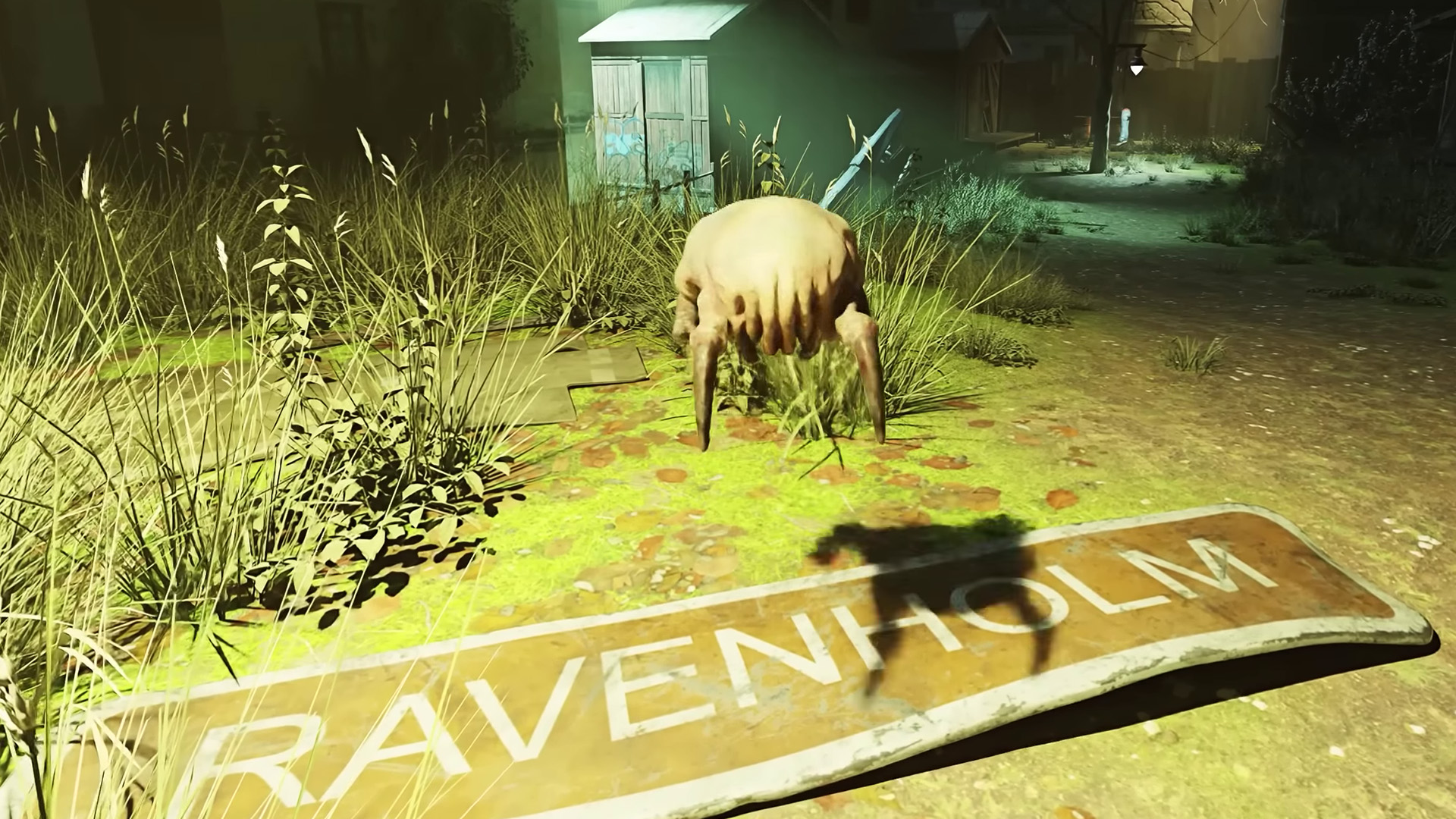
RTX Remix enables modders to breathe new life into beloved videogames. The platform, created by Nvidia, replaces the very core of classic games to take advantage of advanced modern features, such as path-traced lighting, enhanced assets, and upscaling.
What's most exciting about RTX Remix, however, is how it appears to have motivated the modding community worldwide to take on grand new projects. I've spoken to developers working on the most popular ones today to find out why that is.
What is RTX Remix?
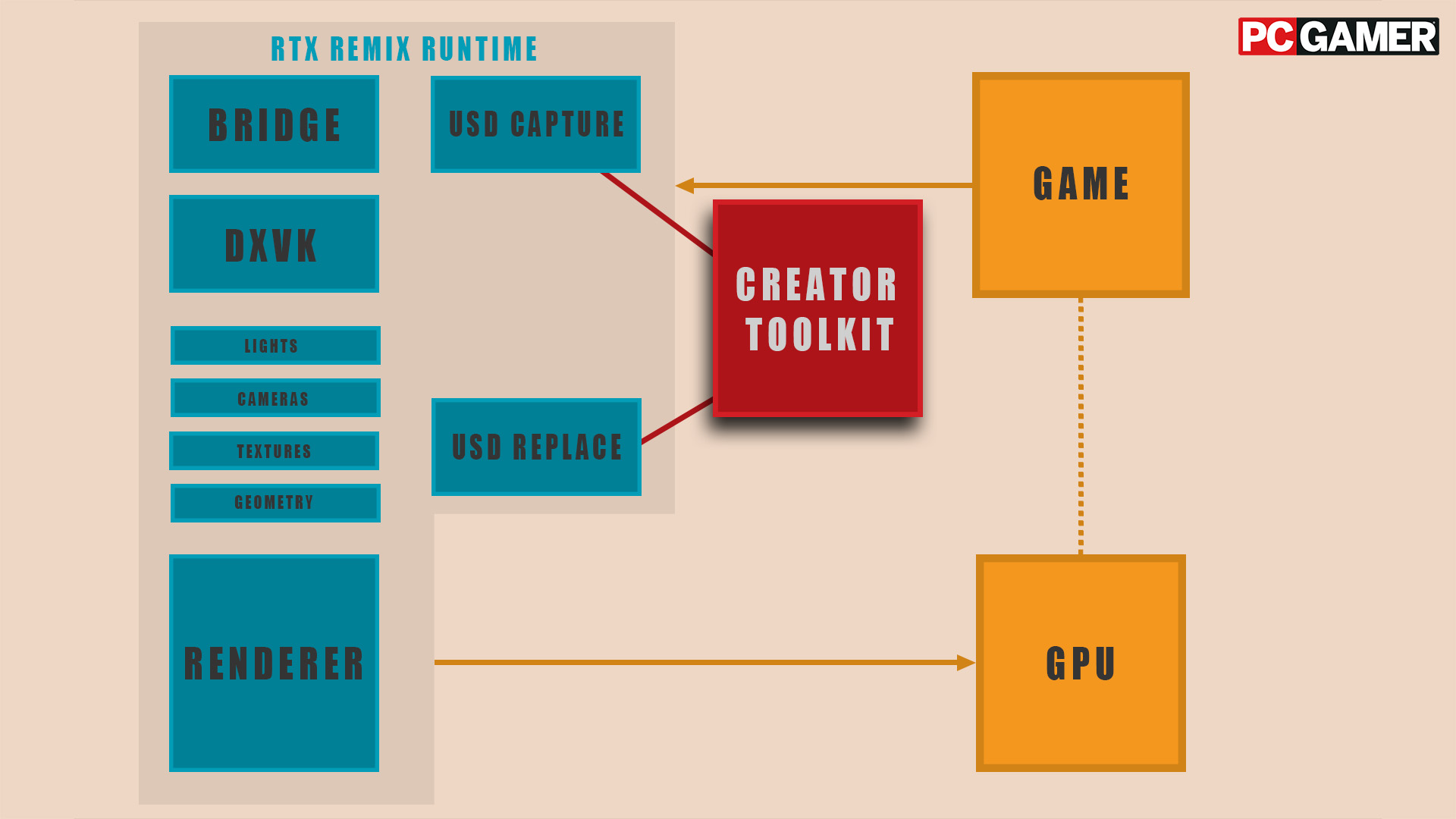
RTX Remix is a collection of software that allows games mainly built on DirectX 8/9 to support modern lighting methods and assets. To do that, it replaces entire chunks of a classic game to form a new rendering pipeline almost entirely removed from the one that shipped with the original game.
"The main thing that Remix does is that it introduces a brand new rendering engine…" says Traggey, a developer and modder working on multiple RTX Remix projects. "It allows us to mod the game in a way that pushes it to a quality level where it's actually comparable to modern triple-A releases."
RTX Remix is made up of two main parts:
- Runtime—Includes the Bridge, which handles the conversion of the old runtime, and the Renderer, which offers access to a Physically Based Rendering (PBR) pipeline including an open-source path tracer. It can also 'capture' game assets in Universal Scene Description (USD) format.
- Creator Toolkit—The RTX Remix application for manipulating and replacing USD assets.
It's best to see RTX Remix in action. In the video embedded below, an Nvidia employee replaces an asset in Half-Life 2 using the Toolkit in under three minutes.
@pcgamer_mag ♬ original sound - PC Gamer
Though born out of Nvidia's internal projects, such as Quake 2 RTX and Portal RTX, the platform is now available to anyone in beta and is already being used far and wide. It's most famously attracted some of the biggest Half-Life 2 modders to take on a massively ambitious project: a complete remaster of one of the best PC games ever made.
Reimagining Half-Life 2 with RTX Remix
"It is a very, very big project. I might even venture as far as to say probably one of the biggest modding projects, considering how long Half-Life 2 itself took to develop," says Orbifold Studios founder Chris "MDDBULLDOGG" Workman.
Orbifold Studios is a collective of developers working on Half-Life 2 RTX, a third-party remake of the game built using RTX Remix. If you're familiar with the Black Mesa remake for the original Half-Life and think this sounds like a similar sized project for Half-Life 2, you wouldn't be far off. Though that's mostly where the similarities end.
"We're not necessarily working with Source on Half-Life 2 RTX. We're working with Remix," Workman says.
RTX Remix stands in for parts of the Source engine used in Half-Life 2. It replaces them with more modern elements and that alone is a huge boon to a community project. RTX Remix enables the use of industry standard file types and workflows, allowing Orbifold Studios to open its doors to industry veterans with loads of experience, even if not necessarily with the Source engine.
According to Workman, "Remix is the great equaliser." It levels the playing field in such a way that a Half-Life 2 mod is no longer a job solely for Half-Life 2 modders.
"The game you're actually seeing on screen is a Vulkan game," says Nyle Usmani, project manager at Nvidia for RTX Remix, referring to Half-Life 2 RTX.
Vulkan is a modern graphics API that many devs will have plenty of experience with. As does Nvidia, as a member of the consortium that produces it and contributing to large chunks of it, such as its ray tracing extensions. It's confident in the open-source path tracer included with RTX Remix, too.
"The path tracer here is just as powerful as any path tracer in any modern videogame, which is something we're really proud of," Usmani says.
"We're essentially scrutinising every single pixel."
Chris "MDDBULLDOGG" Workman
But before it can work its magic on Half-Life 2, Orbifold Studios must recreate the game's assets to play nice with the PBR pipeline.
"Each and every asset we're taking the time to make sure we get right and that is time consuming," Workman says. "We have a backlog of several thousand assets to be done for Half-Life 2."
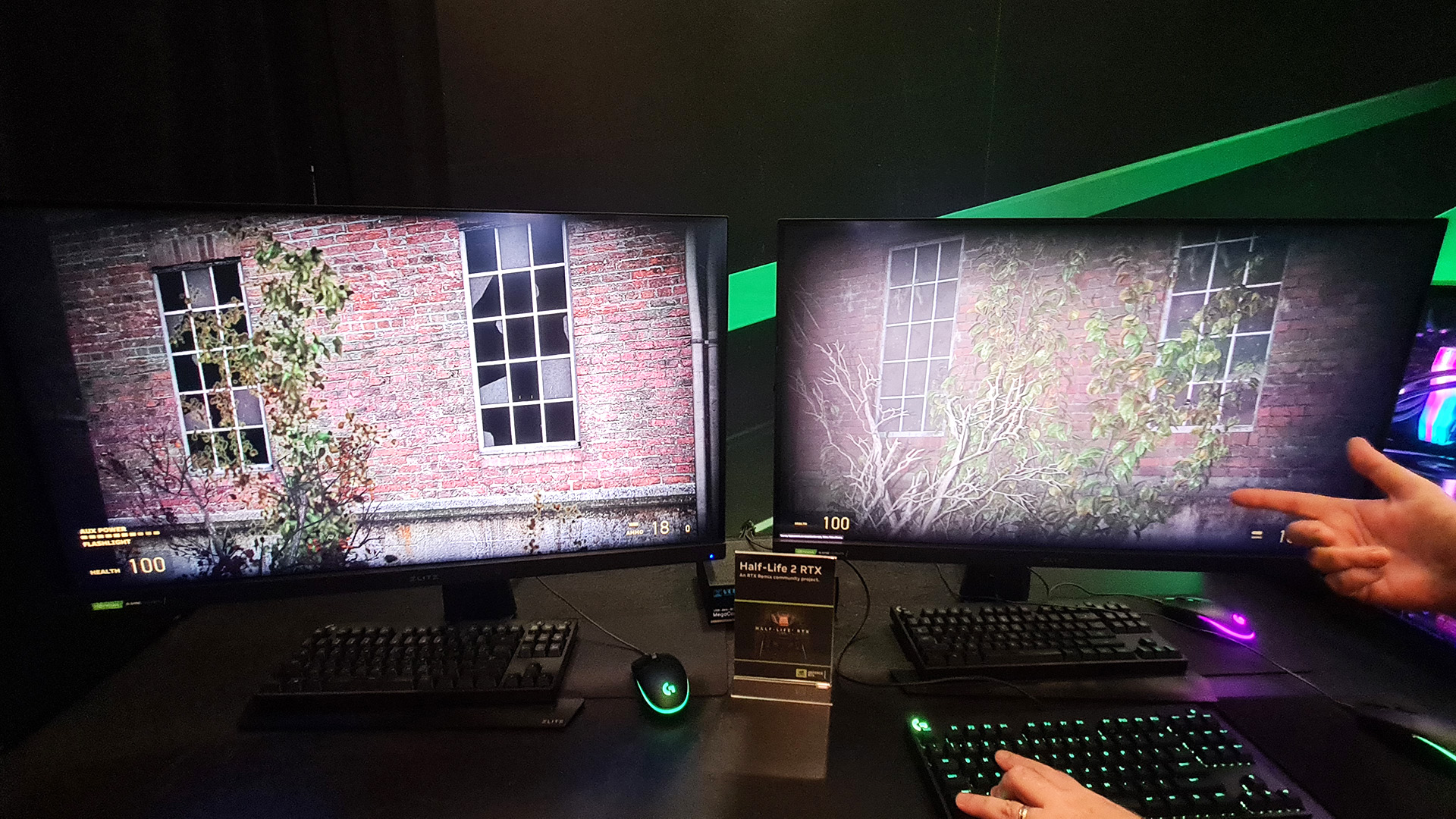
RTX Remix also includes generative AI capable of upscaling textures without having to do it by hand. I'm surprised to hear that Orbifold Studios isn't using them, working so closely with AI darling Nvidia, but Workman offers good reason why not.
"We're essentially scrutinising every single pixel to make sure we're hitting the exact same notes that the original designer intended on certain assets and certain materials."
The intense attention to detail comes from both the team's respect for Half-Life 2 and a desire to stay true to the original feeling of the game. There's a fine line to tread here and the team remains vigilant in sticking to it.
"Everybody remembers it in their own way," Workman says.
"We want to capture that feeling of playing the original, but I don't think we're trying to replace it. Both need to exist," Usmani follows up.
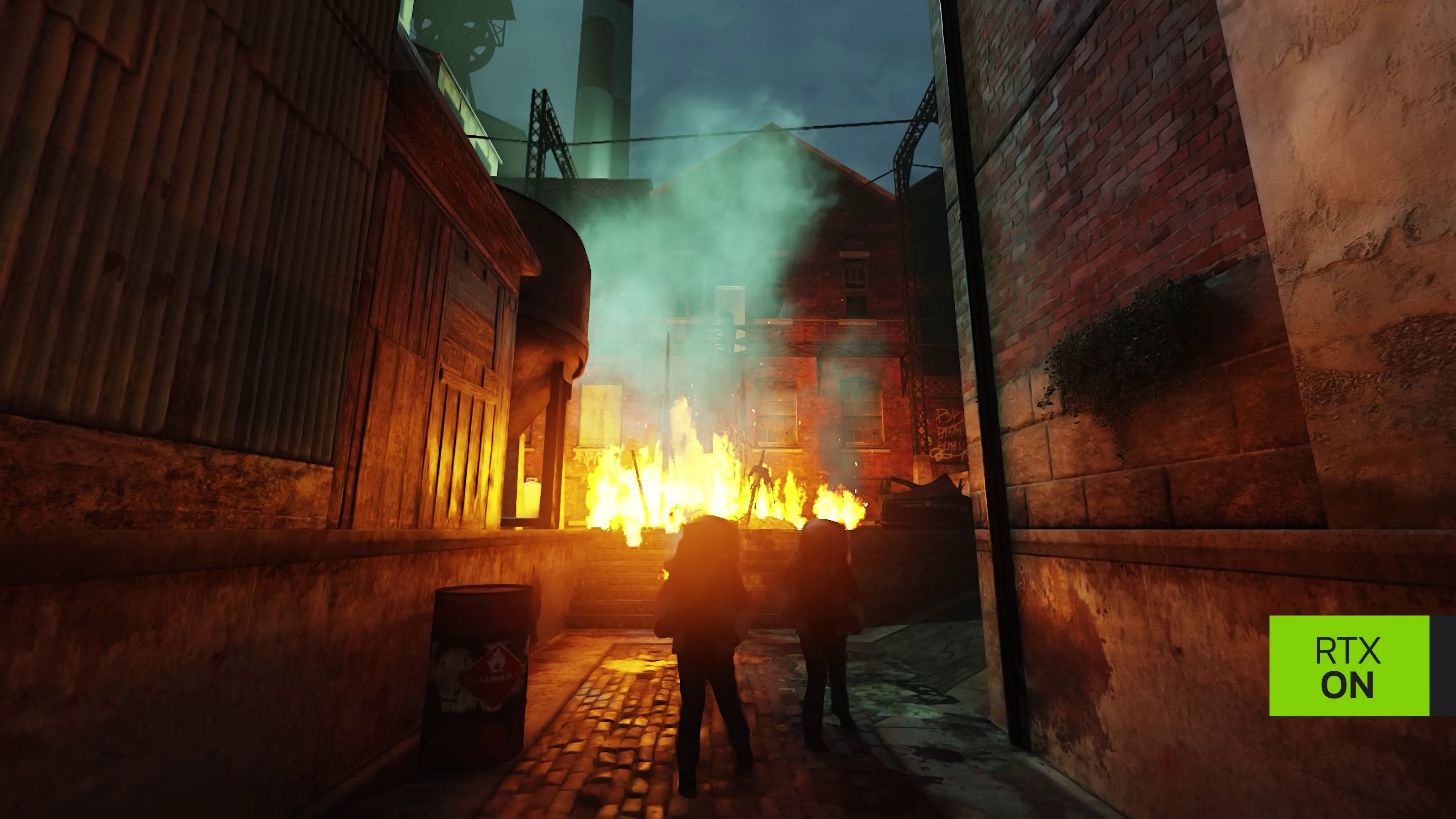
Nvidia has been closely collaborating with Orbifold Studios on Half-Life 2 RTX from the get-go. Meanwhile, the game's original creator, Valve, knows about the project but has no official involvement. But I'm still curious as to why Nvidia created the Remix platform in the first place, and I'm told it came out of both its own internal tests and how modders were messing around with other RTX remakes from Nvidia's Lightspeed Studios.
Usmani says it "comes down to us wanting to make sure modders have the best tools possible to make the coolest, most graphically impressive mods and making sure that classic games don't get left behind along the way."
Under the hood of Need For Speed Underground 2 RTX
Half-Life may be the most recognisable Remix project but there are hundreds ongoing today. One of the more popular work-in-progress mods is for Need For Speed Underground 2.
Take a look at the mod in action and its popularity should come as no surprise. Yet it did for the mod's original creator, Uncle Burrito, who tells me they never expected it to get big. They're now joined by a global team chipping away at the project when they can, including Traggey, E-man, Adam Player, HellRaven EXP, CountBuggula and Hemry. I caught up with a few to see how this project differs from one like Half-Life 2 RTX.
"Some games aren't that moddable and others are extremely moddable."
Traggey
"Some games aren't that moddable and others are extremely moddable," Traggey says. "You'll look at stuff like Half-life 2, for example, where you have actual level editors and that kind of thing… there is no level editor for Need For Speed.
"There's no way for us to break into the core files and change things on that end, which is bringing a lot of complications for us to deal with that we have to solve in a very different way from the Half-Life 2 team."
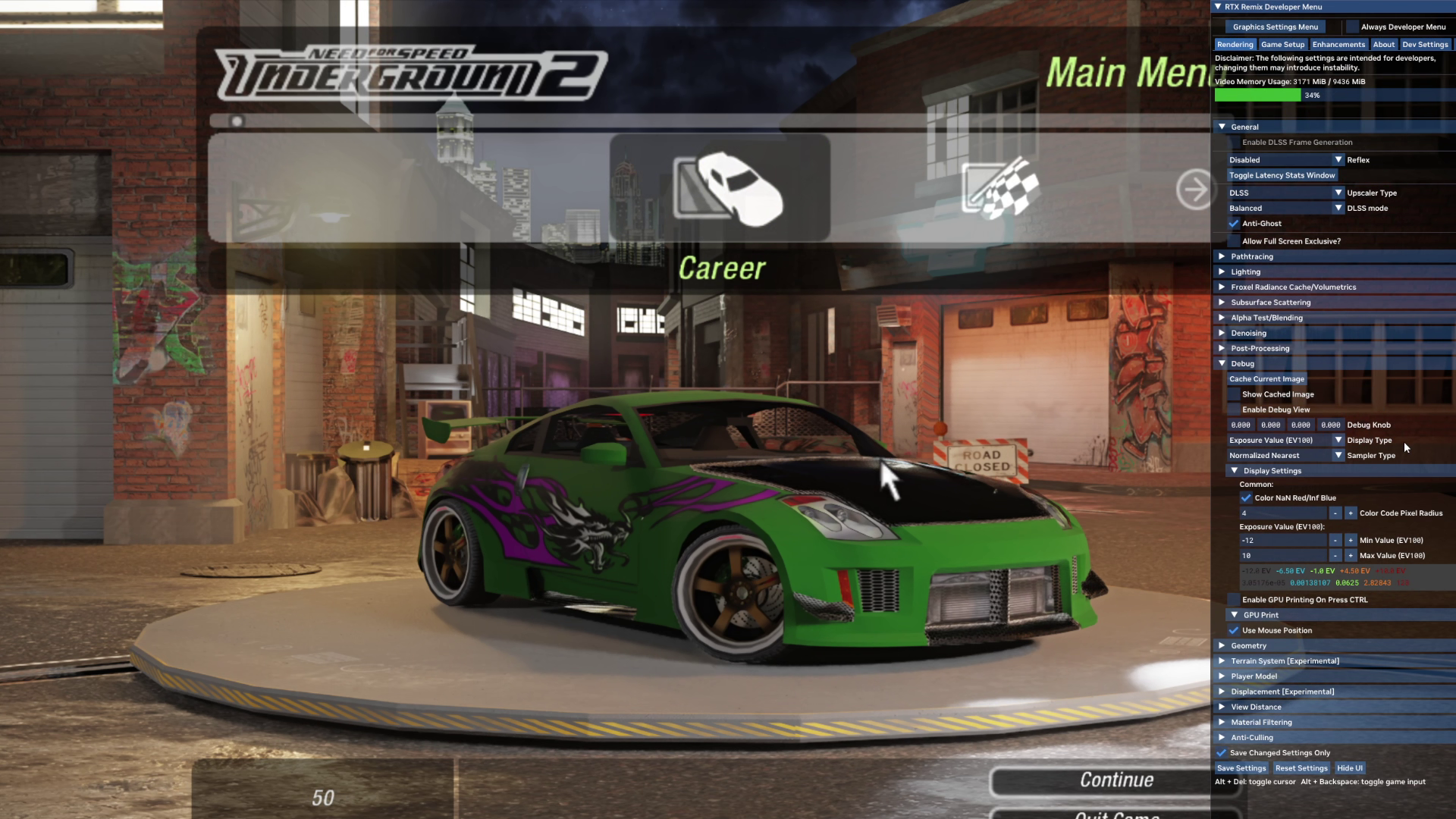
I'm told every game has its own set of issues to deal with. For NFSU2, one such issue is car customisation.
"If you change your car in the game, you modify it, change the colour, put on a different body part, the car will have a completely different unique texture and material assigned to it," Uncle Burrito says.
A major headache with the number of car customisation options in the game. Another headache is culling: once an object disappears from the screen, the engine gets rid entirely. What was once a smart way to save resources in 2004 becomes a problem to mitigate with a path-traced lighting system in 2024, meaning street lights flicker out of existing as you zoom by. There are ways to mitigate this effect even without deeper access to the game's files, but I'm told it's not easy work.
The NFSU2 team knows how important it is to remake a game while retaining what made it special, too. The clever way the team is approaching this is by using the game's original inspiration for its own asset creation: neon-lit streets, urban highway infrastructure, and, of course, the early Fast & Furious movies.
"Matching that vibe is a challenge in itself," Uncle Burrito says.
Getting started with RTX Remix
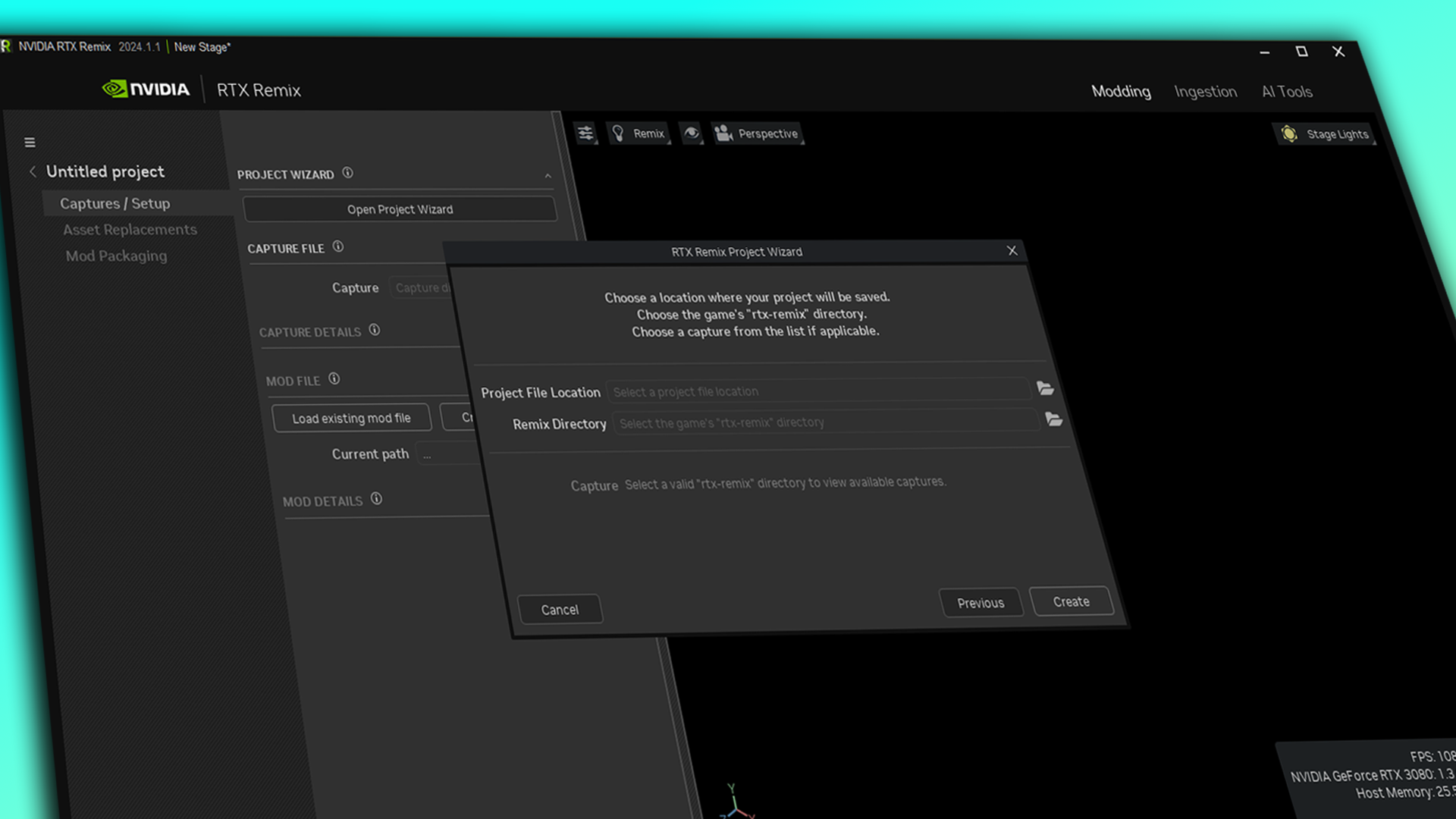
If there's one clear thread from speaking with those working with RTX Remix today, it's that it takes all manner of skill to get up-and-running. The fundamental process of modding may have been simplified but full remakes are not light work.
"There's a lot of hard work that goes into it," Usmani says.
"You rely on the community to help get you where you need to be."
Chris "MDDBULLDOGG" Workman
Workman likens modding Half-Life 2 with Remix to creating an actual game. Uncle Burrito tells me people often underestimate what goes into these mods. Everyone speaks of users that expect to load up RTX Remix and press a one-click remaster button that does all the work for them. They all assure me that's absolutely not the case, but that's evident enough from my discussions with them. It's clear just how much time and effort goes into these community projects.
That's not to ward anyone off getting involved with RTX Remix. Remakes are built by communities of volunteers and everyone I spoke to recommends joining the official Discord channel to get involved.
"You rely on the community to help get you where you need to be," Workman says. "And there are people out there who will help. You ask those questions, you get going, and before you know it, you have a team making a game."







